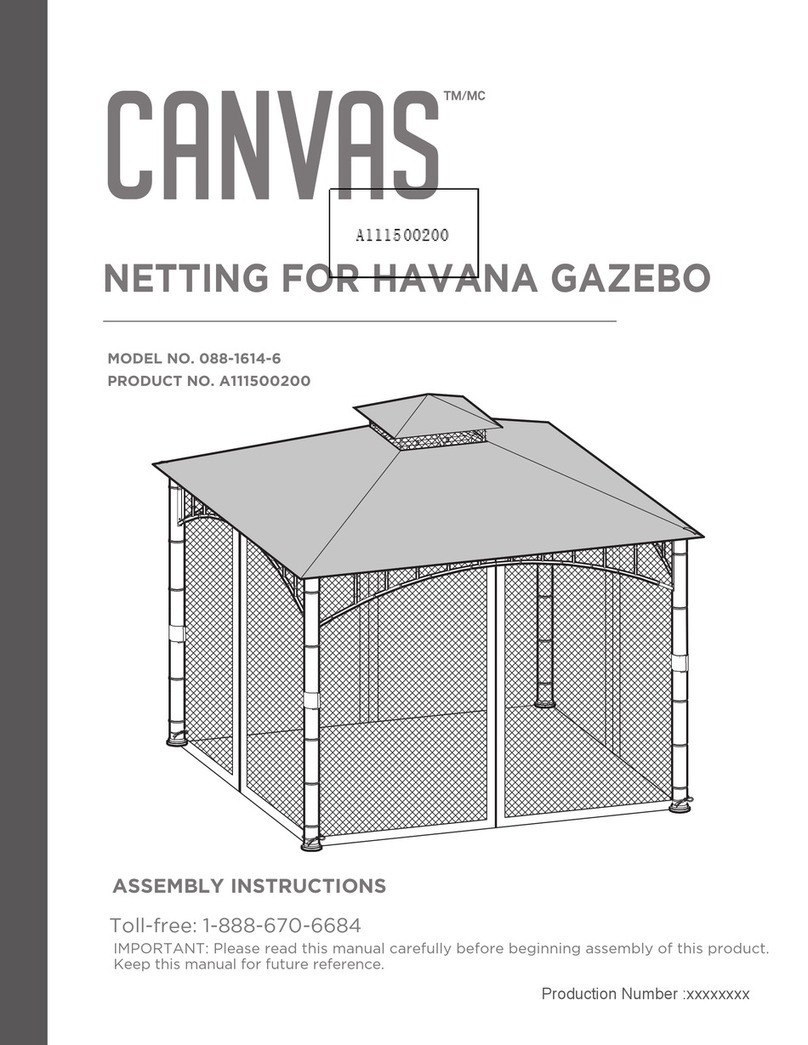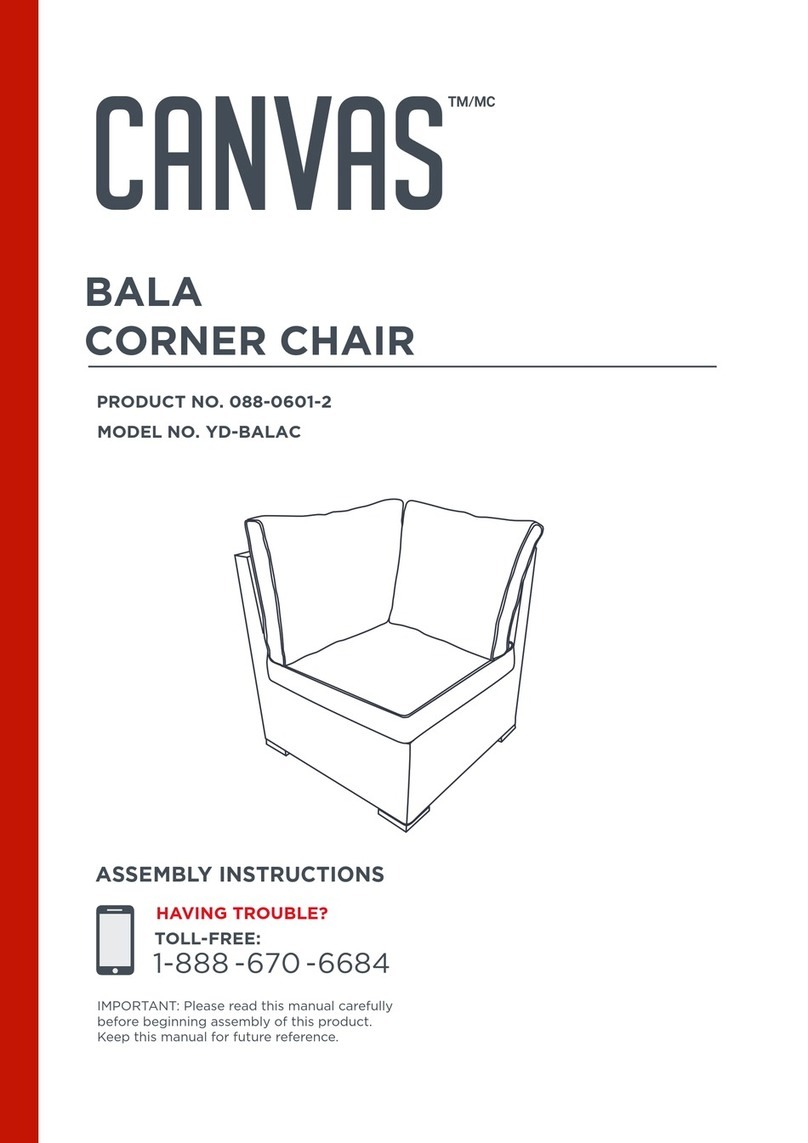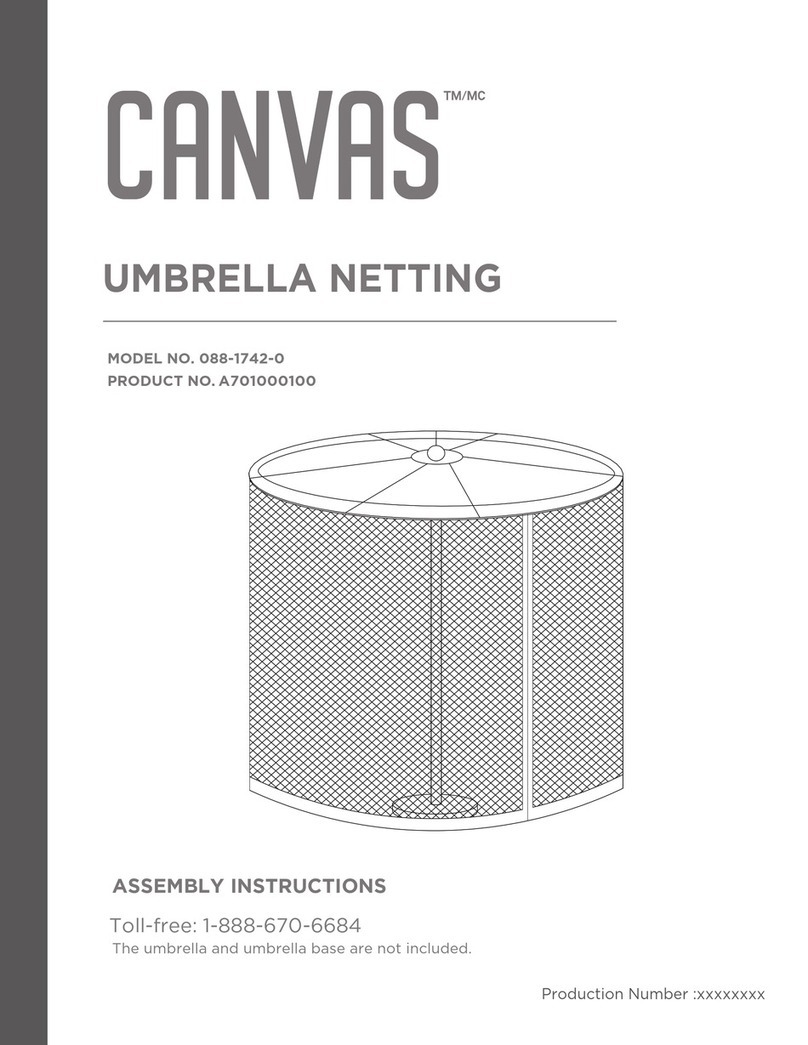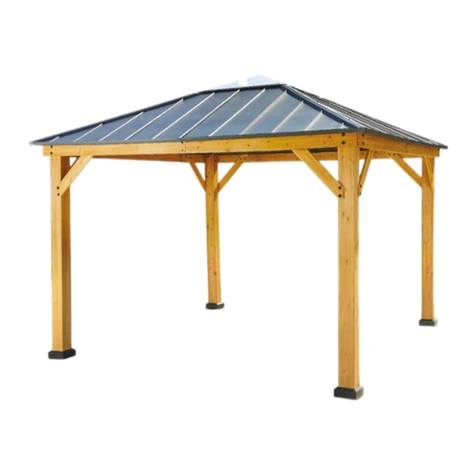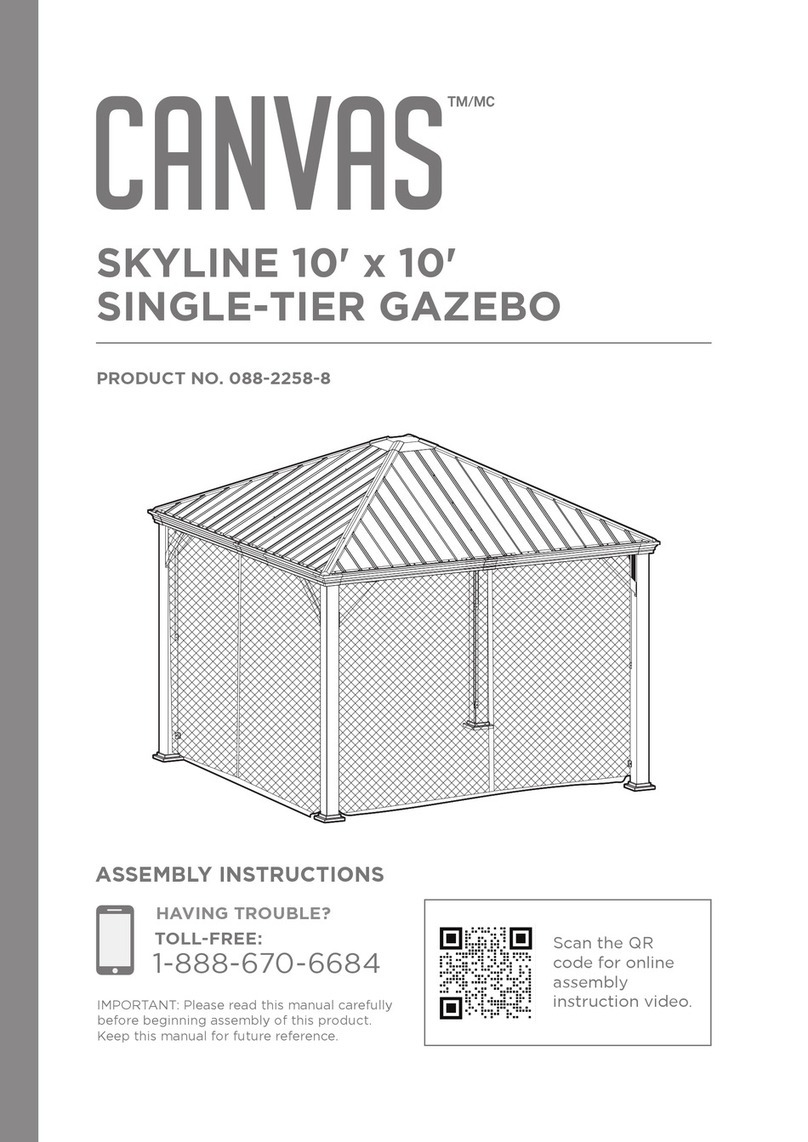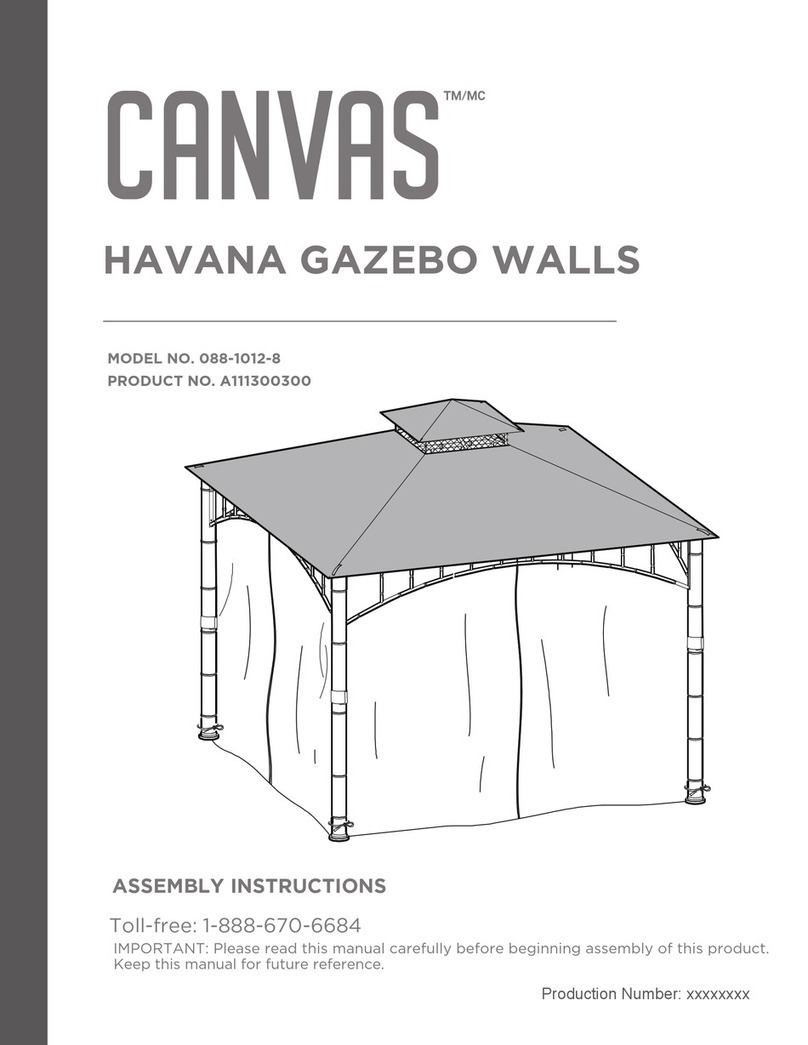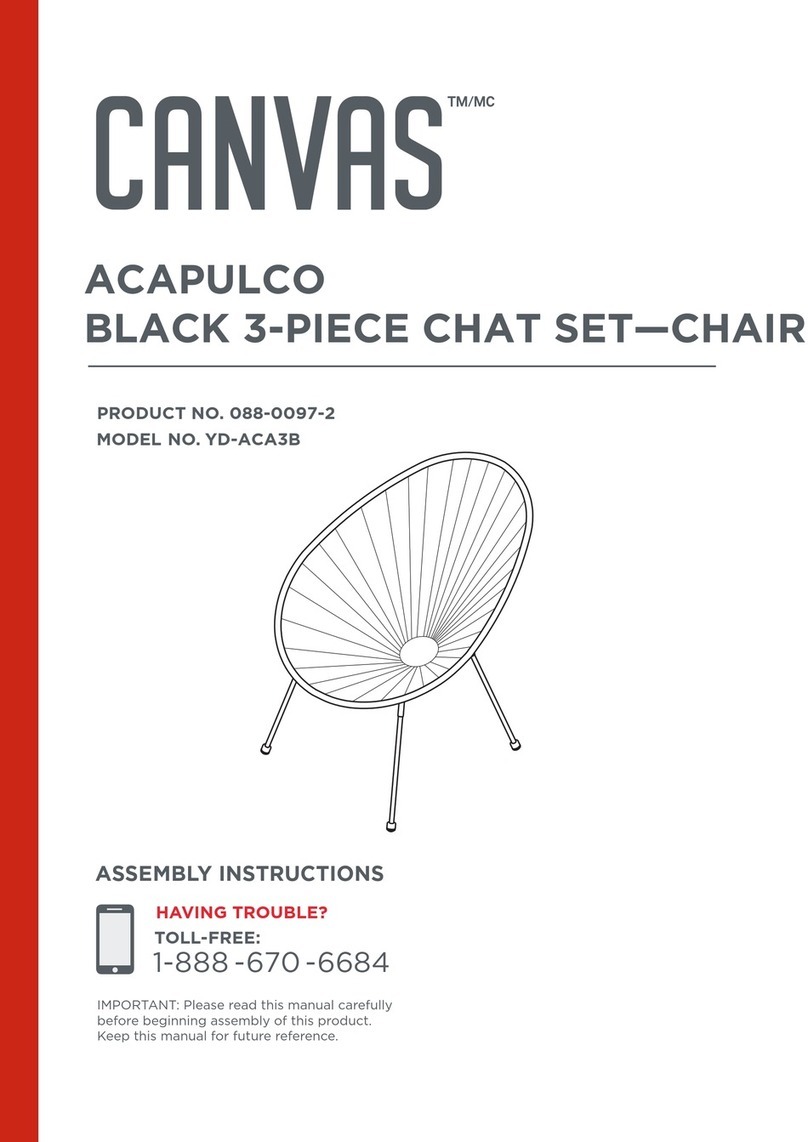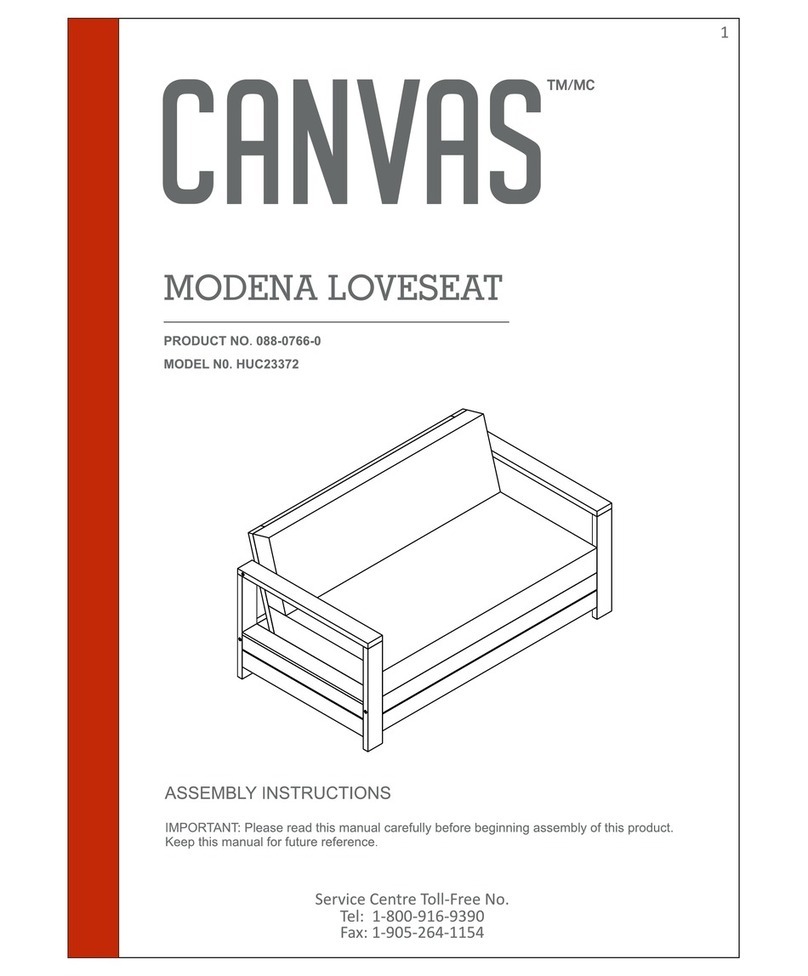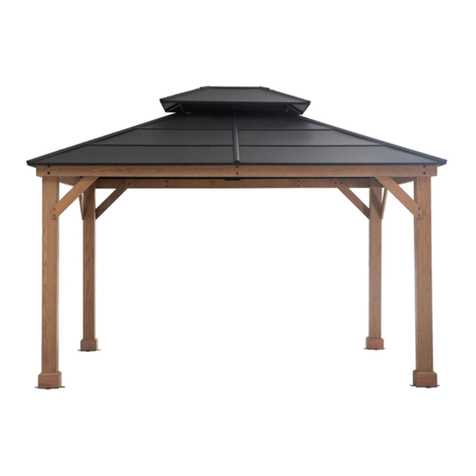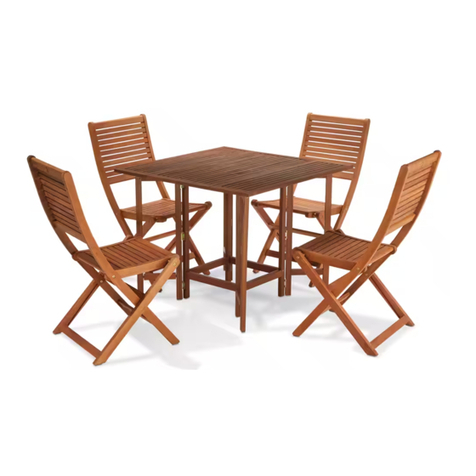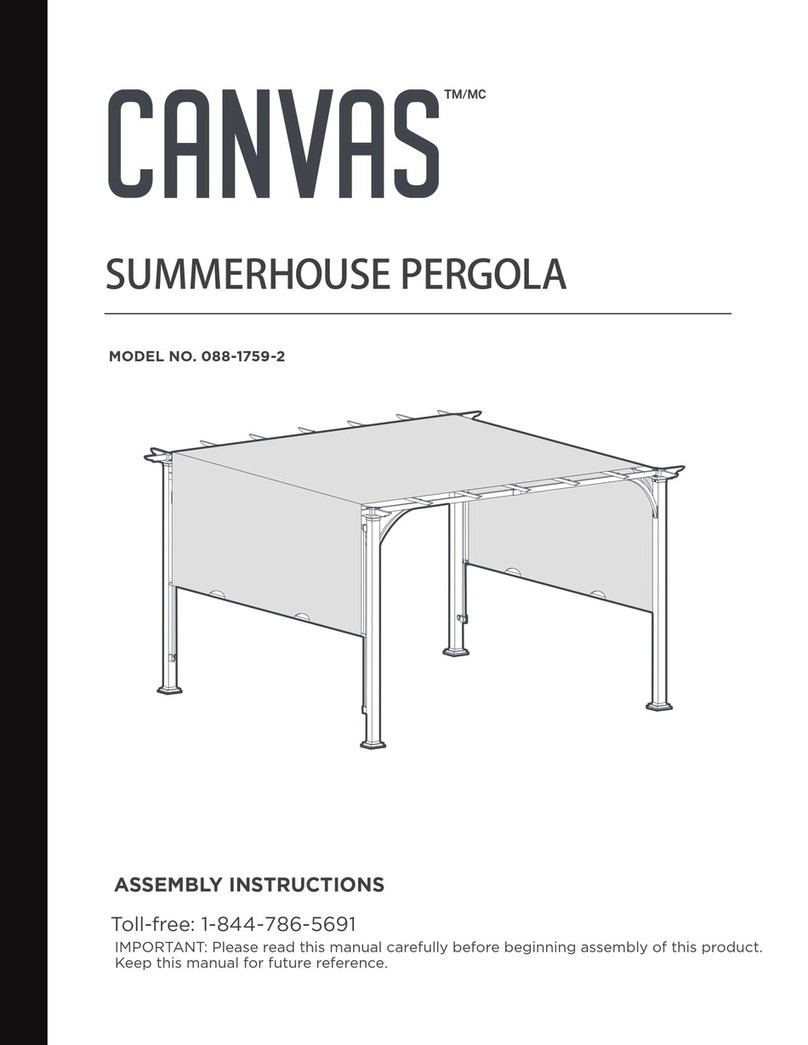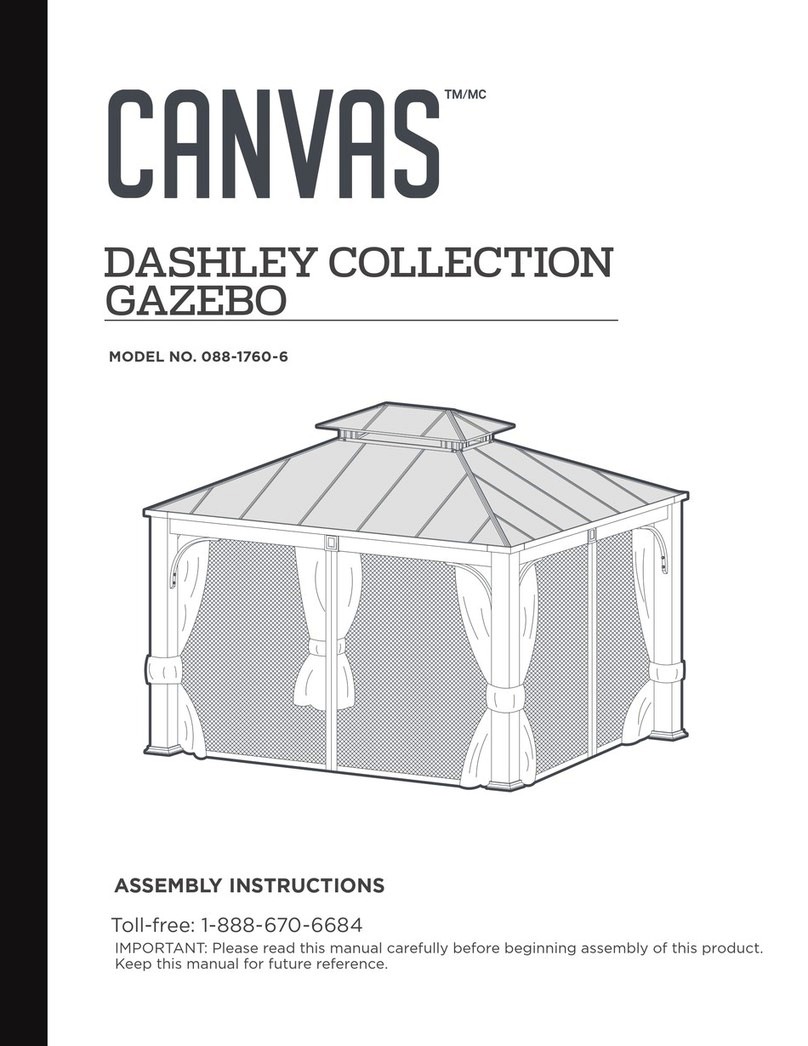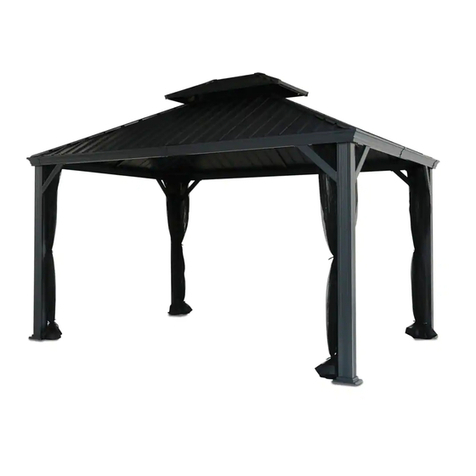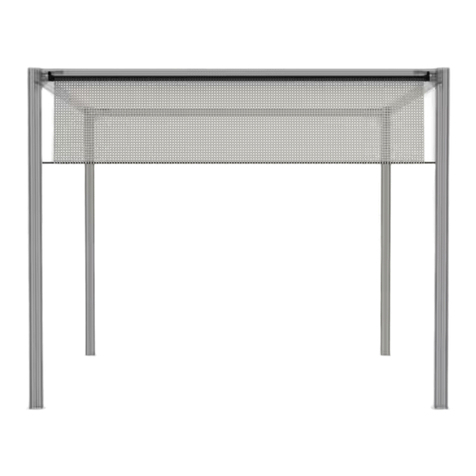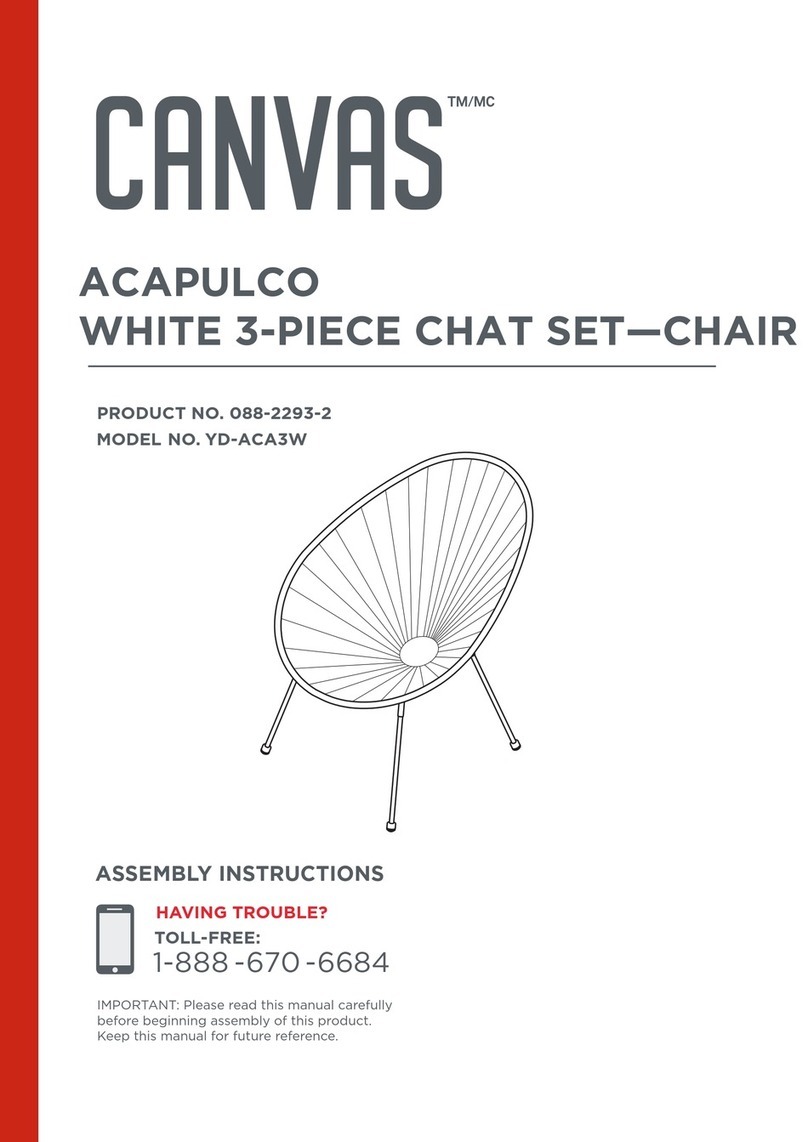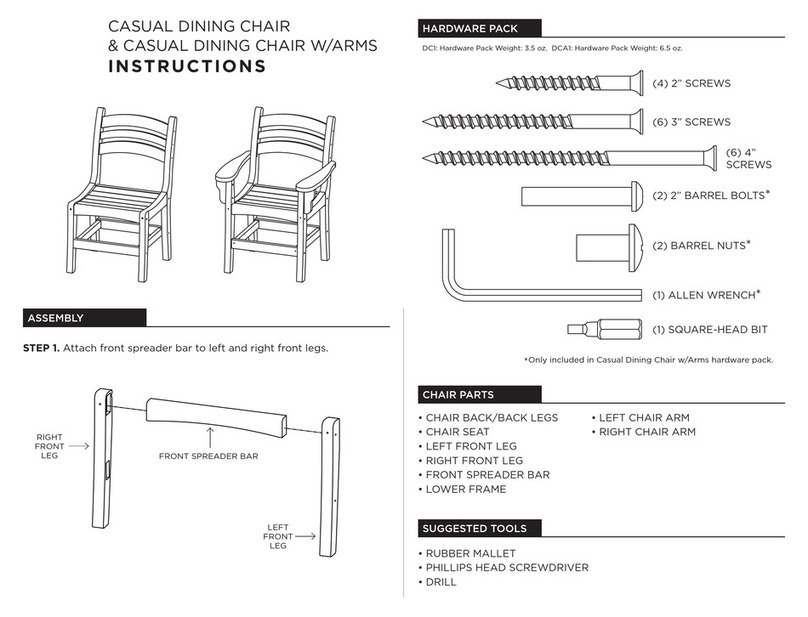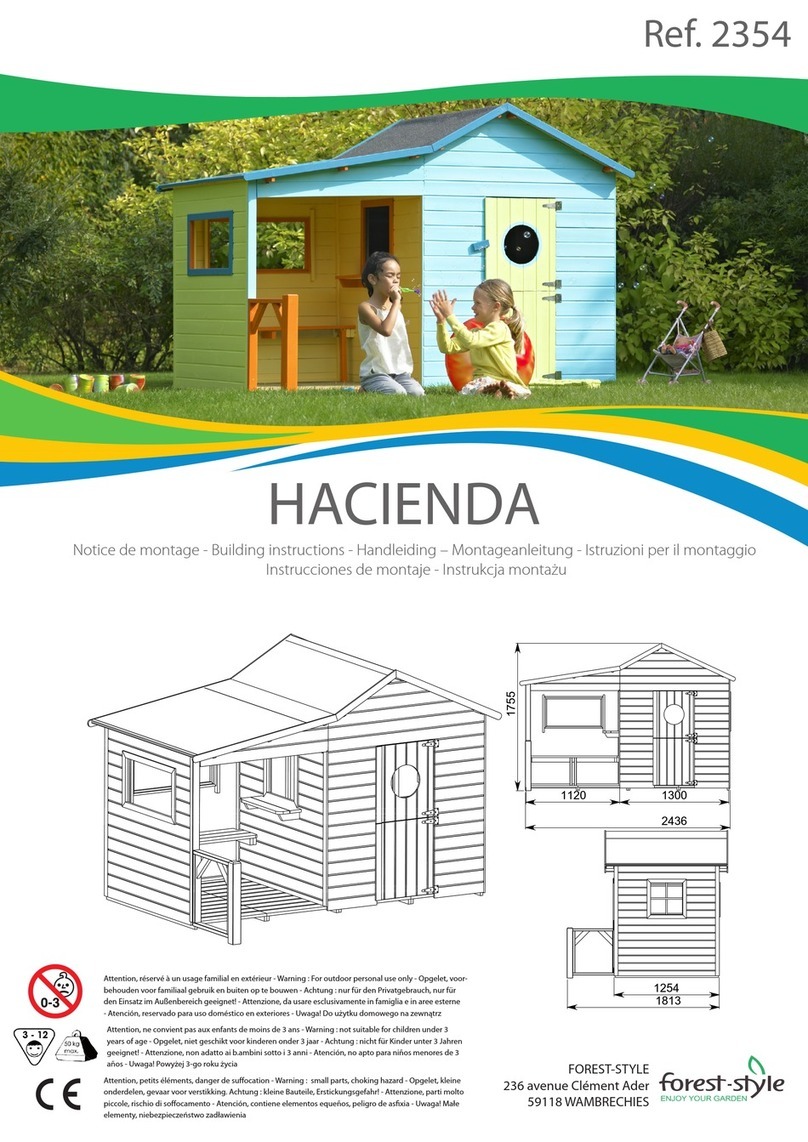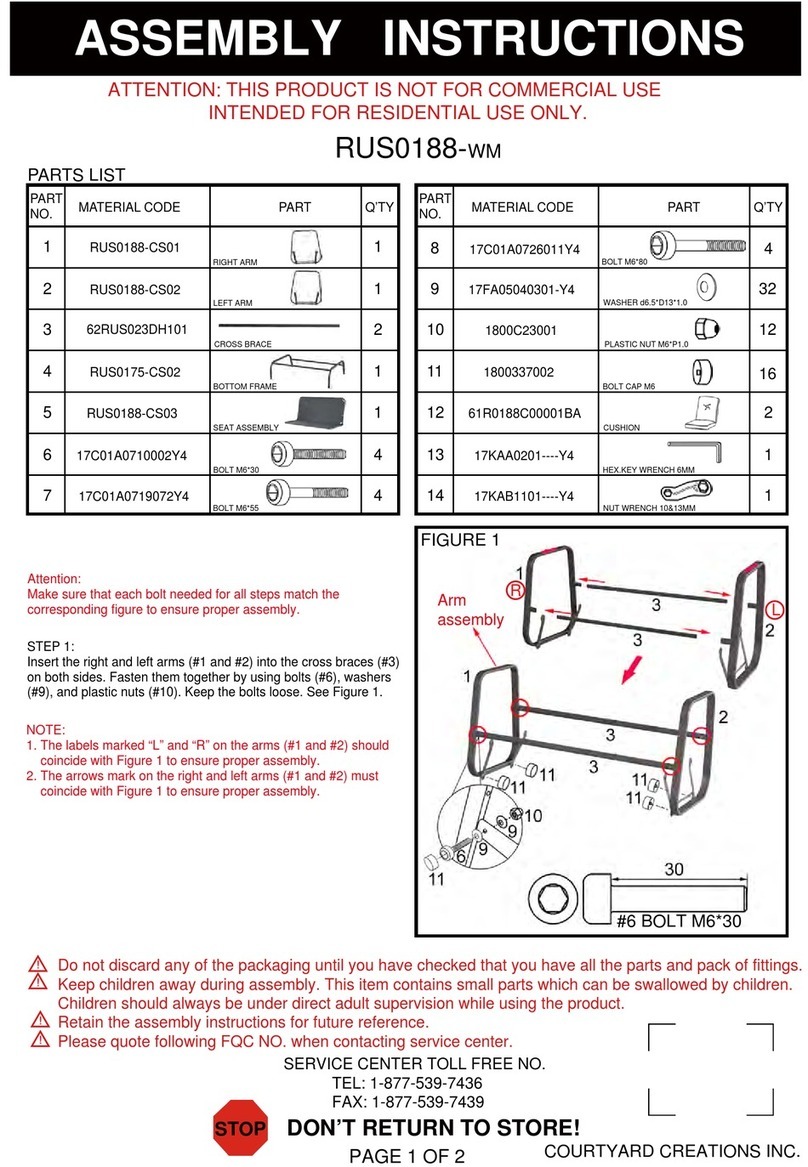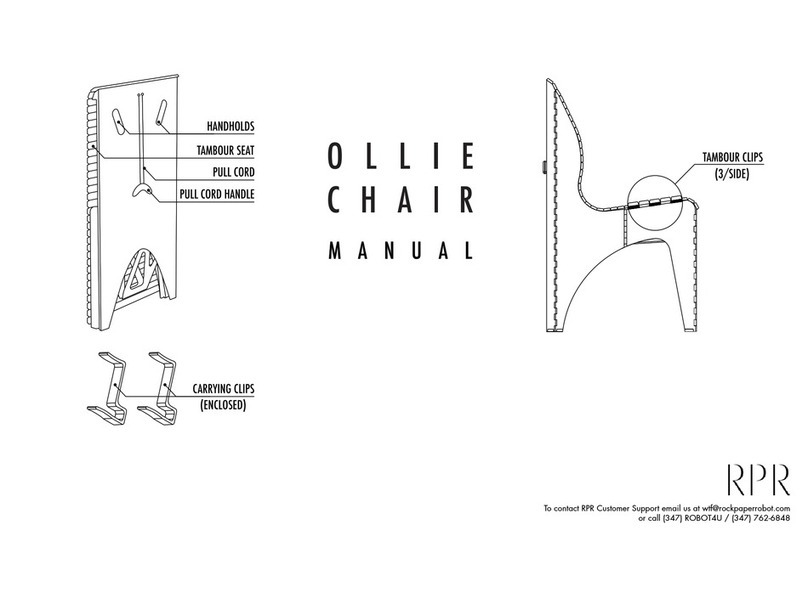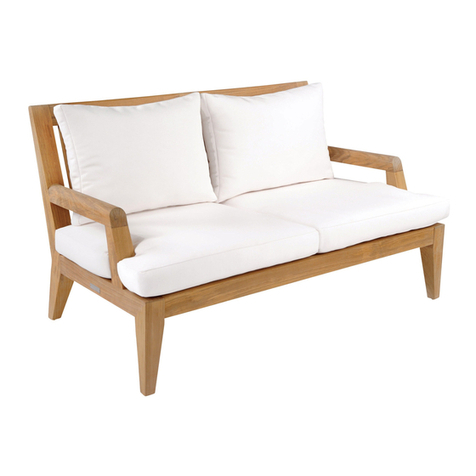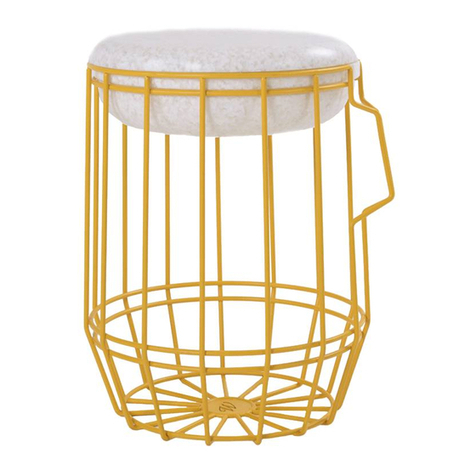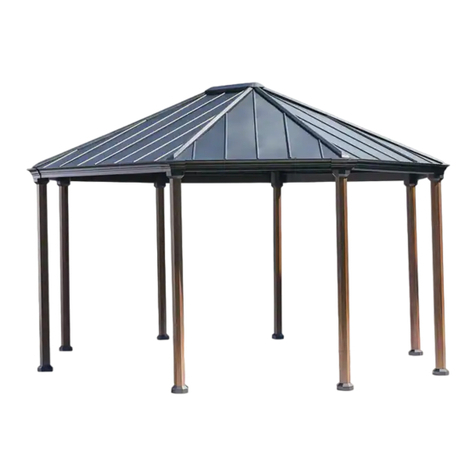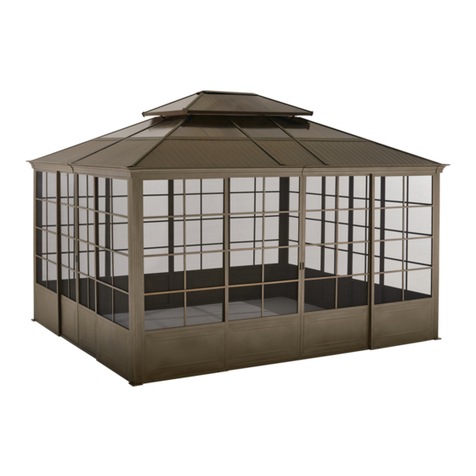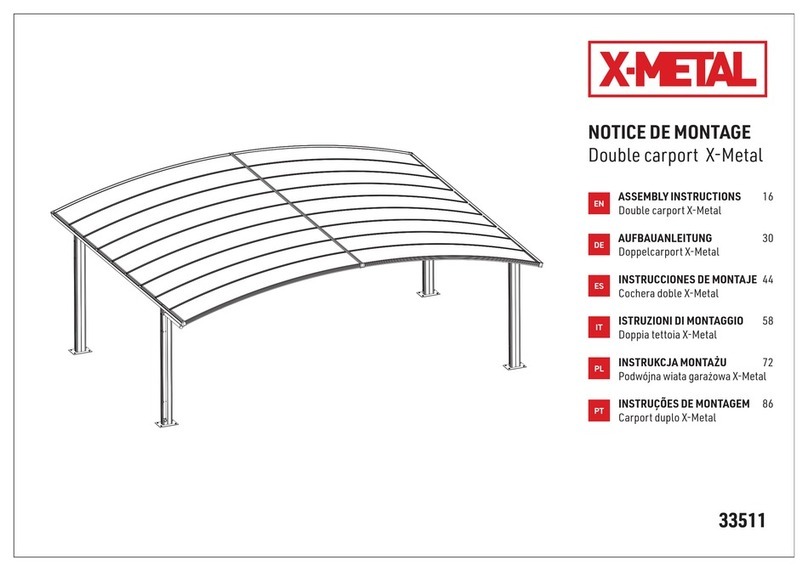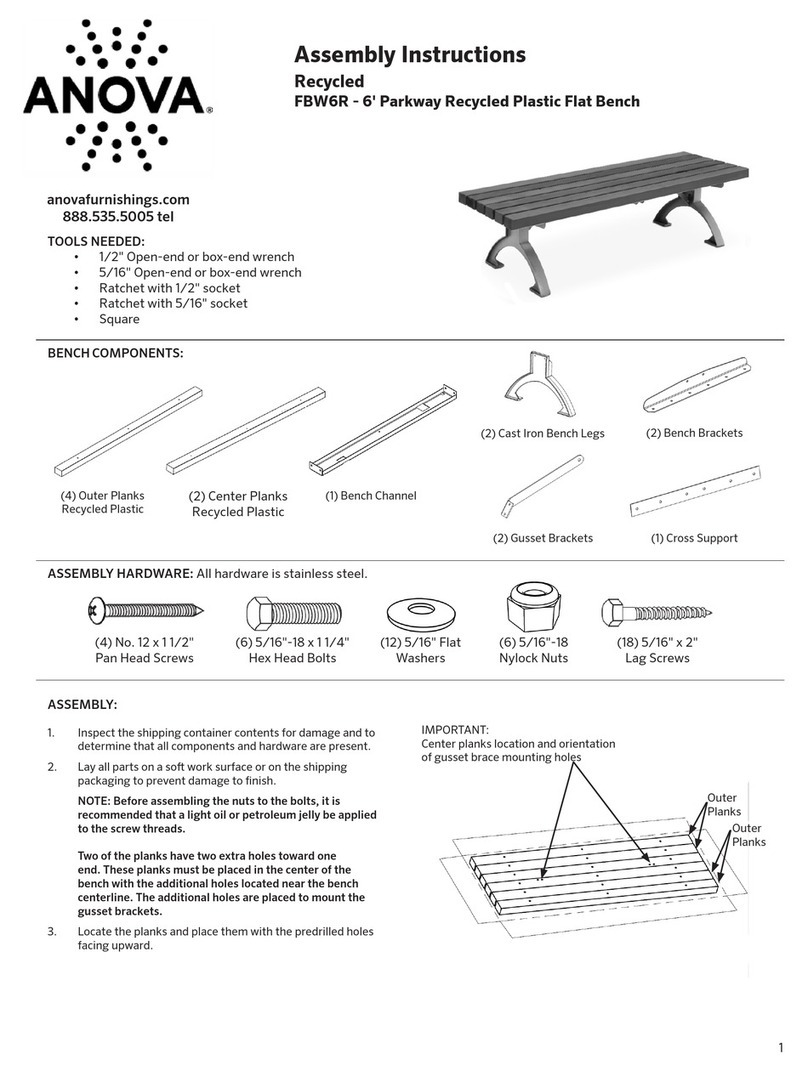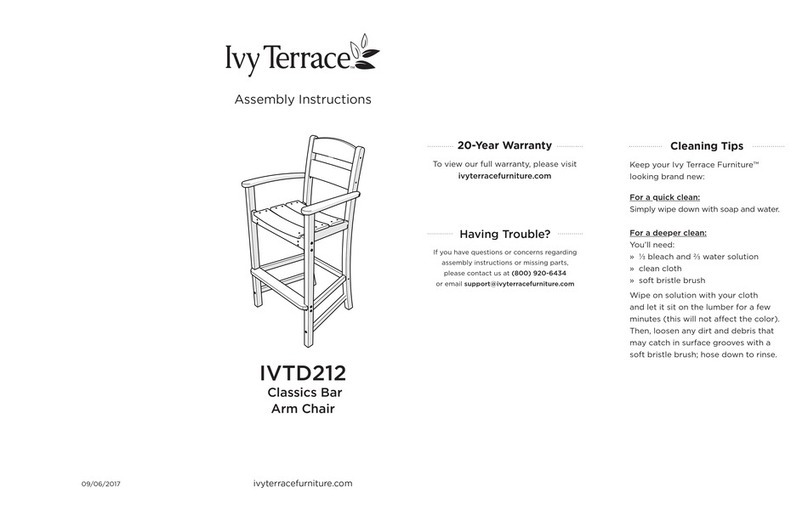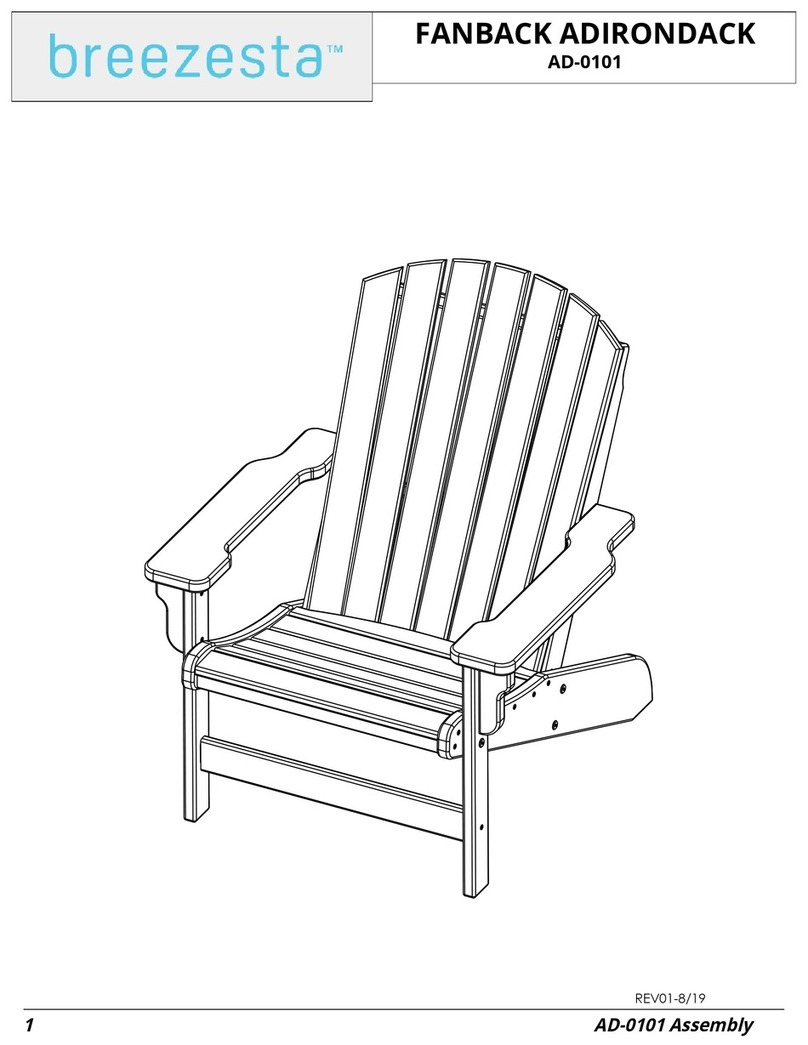
10 11
IMPORTANT SAFETY INFORMATION
Product No. 085-1573-8 | Model No. FHWS80031
ATTENTION:$Q\DOWHUDWLRQRIWKHRXWGRRU´UHWDEOHWKDWLVQRWVSHFL´FDOOy
directed in the operations manual will void manufacturer warranty.
LP GAS
/3JDVLVµDPPDEOHDQGKD]DUGRXVLIKDQGOHGLPSURSHUO\%HFRPHaware of the
characteristics before using any LP gas product.
Propane Characteristics:
• Flammable, explosive under pressure, heavier than air and settles in pools in low
areas.
• In its natural state, propane has no odour. For your safety, an odourant has been
added.
• Contact with propane could burn your skin.
3URSDQHLVH[WUHPHO\µDPPDEOHDQGKD]DUGRXVLIKDQGOHGLPSURSerly.
LP GAS WARNINGS:
• Cylinders must be stored outdoors in a well-ventilated area out of reach of
children.
• Disconnected cylinders must have threaded valve plugs tightly installed and must
not be stored in a building, garage or any other enclosed area.
• Never use a propane cylinder with a damaged body, valve, collar or footing.
'HQWHGRUUXVWHGSURSDQHF\OLQGHUVPD\EHKD]DUGRXVDQGVKRXOd be checked by
your propane gas supplier.
• Be sure to use only one 20 lb (9.1 kg) LP gas cylinder with a Type 1 valve with this
appliance as required by the American Natural Standards Institute (ANSI) and the
Canadian Standards Steering Committee.
• Only tanks marked “propane” may be used.
• The installation of this unit must adhere to local codes or either the National Fuel
Gas Code, ANSI Z223. 1/NFPA54, or CAN/CGA-B149.1, National Gas and Propane
Installation Code.
• LP gas tank must be arranged for vapour withdrawal.
7KH/3JDVWDQNPXVWKDYHDOLVWHGRYHU´OOLQJSUHYHQWLRQGHYLce (OPD) and a
QCCI Type I (CGA810) LP gas tank connection.
• The LP gas tank must have a tank collar to protect the tank valve.
• Never use an LP gas tank with a damaged body, valve, collar, or footing. Dented
RUUXVWHG/3JDVWDQNVPD\EHKD]DUGRXV
• The LP gas tank should not be dropped or handled roughly.
• Tanks must be stored outdoors out of the reach of children. Do NOT store in a
building, garage, or any other enclosed area.
• Never store your LP gas tank where temperatures can reach over 125°F (52°C).
• Do not store the LP gas cylinder in direct sunlight or near a source of heat or
combustion.
1HYHUNHHSD´OOHG/3JDVWDQNLQDKRWFDURUFDUWUXQN+HDt will cause the gas
pressure to increase, which may open the relief valve and allow gas to escape.
• Place dust cap on valve outlet whenever the LP gas tank is not in use. Only
install the type of dust cap on the LP gas tank and the LP gas tank valve. Other
types of caps or plugs may result in leakage of propane.
a. Do not store a spare LP gas cylinder under or near this appliance.
E1HYHU´OOWKH/3JDVF\OLQGHUEH\RQGIXOO
F,IWKHLQIRUPDWLRQLQDDQGELVQRWIROORZHGH[DFWO\D´UHFDXVLQJ
death or serious injury may occur.
/3JDVF\OLQGHUVVKRXOGEH´OOHGRQO\E\DFHUWL´HG/3JDVGHaler.
• The pressure regulator is set for 11" W.C. (2.74 kPa).
7KHPD[LPXPLQOHWSURSDQHJDVSUHVVXUHIRUWKLVRXWGRRU´UHWable is 250 PSI;
WKHPLQLPXPLQOHWSURSDQHJDVSUHVVXUHIRUWKLVRXWGRRU´UHWDEle is 25 PSI.
• Never attempt to attach this appliance to the self-contained LP gas system of a
camper trailer, motor home or house.
• Always use the pressure regulator and hose assembly provided with the appli-
ance to connect to a LP gas cylinder. Never connect to an unregulated LP gas
supply. For technical support contact the service centre at 1-888-670-6684.
+DQGWXUQWKHPDQXDOJDVFRQWUROYDOYH1HYHUXVHWRROV,IWhe valve will not turn
E\KDQGGRQRWWU\WRUHSDLULW&DOODFHUWL´HGJDVWHFKQLFLDn. The use of force or
DQ\VHOIDWWHPSWHGUHSDLUPD\UHVXOWLQD´UHRUH[SORVLRQ
Connecting your gas cylinder:
Before connection, be sure that there is no debris caught in the head of the gas
cylinder, head of the regulator valve or in the ports. Connect regulator valve and
KDQGWLJKWHQ´UPO\'LVFRQQHFWWKHSURSDQHF\OLQGHUIURPWKHUHgulator valve
ZKHQWKH´UHWDEOHLVQRWLQXVH'2127REVWUXFWWKHµRZRIFRmbustion air and
ventilation air to the burner.
IMPORTANT SAFETY INFORMATION
PROPANE (LP) DANGERS AND WARNINGS
